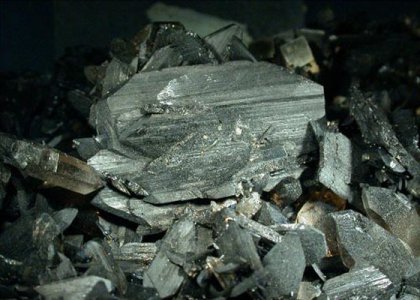Tungsten bars

Characteristics
The chemical element tungsten is in the sixth group of the periodic system, and has an atomic weight of 183.84. It is one of the heaviest metals. It has been obtained from tungsten anhydride by reducing it with carbon. It has a light gray color with metallic luster. In nature it occurs exclusively in mixtures with several stable isotopes, with mass numbers from 180 to 186.
| Atomic number W | Atomic (molar) mass g/mol | Oxidation state | Density [g/cm3] | Melting point t ° C | Boiling point t°C | Melting point kJ/kg |
|---|---|---|---|---|---|---|
| № 74 | 183,84 | 0, 2, 3, 4, 5, 6 | 19,25 | 3422°С | 5500°С | 191 |
History
As early as the 17th century Europeans knew wolframite and scheelite, the most common tungsten minerals. Pure tungsten was isolated only at the end of the 18th century, but remained a laboratory rarity for a long time before Oxland patented the production of tungstic acid, sodium tungstate, and tungsten from cassiterite in 1847. Ten years later Oxland patented the production of iron-tungsten alloys that formed the basis of today's high-speed steels. But for almost half a century it was impossible to put these developments into production because of the high cost of production. Tungsten steel was melted for the first time in the Urals in 1865. At the end of the 19th century the urgent need for alloyed and tool steels resulted in the start-up of a line of high-speed steels at Bethlehem Steel. In 1900 samples of these alloys were exhibited at the World's Fair in Paris, astonishing metallurgists of all developed countries. At the beginning of the XX century Edison guessed to use a tungsten filament in incandescent lamps. This was the beginning of the use of tungsten in electrical engineering. Today, tungsten is no longer a rarity and has taken a firm place in everyday life. It can be purchased at the most reasonable prices.
Physical Properties
W belongs to the group of refractory metals. All elements in this group are characterized by a high melting point (over 2500 ° K) and high density (above 8 g/m3). Along with this, tungsten has a high hardness index of 3430 MPa and has the highest boiling point of 5828°K (5555°C) as compared to the other refractory elements in this group of the periodic table. Among the metals of this group, tungsten is one of the most expensive.
Varieties of
As a rule, tungsten is used in two kinds. The first type is a porous metal impregnated with copper or silver. Because of the impregnation, the metal is better able to be cut at speeds that can reach 600 m/min. If we compare it with the second kind of tungsten, malleable and unalloyed, the latter has a maximum cutting speed of 90 m/min.
In addition, tungsten alloys are divided into: monophase and heterophase. Monophase alloys are considered alloys alloyed with some chemical elements (molybdenum, chromium, rhenium, etc.). The strongest is an alloy that contains 15% of molybdenum. The most ductile alloy is obtained by alloying with rhenium, its percentage in the alloy is about 26%. As for the price of this type of tungsten, it is slightly lower compared to porous metals.
Heterophase alloys include those that include carbon and zirconium (niobium) at percentages of 0.20-0.60 and 0.2-0.6, respectively. At temperatures below 2300 ° C of such alloys is a highly dispersed carbide particles, which increases high-temperature strength, such alloys are also called a dispersion-strengthened.
Tungsten carbide
Most commonly, alloys with WC carbide in their composition belong to group
Along with this, there are several other groups, such as: TTK and TK. TTK-This alloy contains titanium carbides and tantalum. They are used for heat resistant steels and titanium alloys.
Alloy of the TK group differs from TTK by the fact that it contains only titanium carbide. These alloys are used when working with carbon steels, by turning and milling.
Due to the high cost of tungsten, tungsten-free alloys are often used, their composition includes titanium carbides and other refractory metals (nickel, molybdenum, etc.).
Application
More than 60% of tungsten mined is used for the production of stainless steel alloys and special tool steels. Often tungsten scrap is used for these purposes. Tungsten non-consumable electrodes are used for welding all types of steels in alternating and direct current. Thanks to the special coloring of the electrodes (gold, red, blue, gray
For many years, heat-resistant tungsten alloys have been used for heat-resistant coating of technical parts. Its exceptional refractoriness and minimal surface evaporation allow this metal to be used for electric lamp filaments. Some chemical companies use it as a catalyst in organic synthesis. In addition, tungsten compounds are used as a heat-resistant lubricant, as dyes for fabrics that enhance water resistance and flame retardancy.
Buy at the best price
Evek GmbH sells a wide range of heat-resistant rolled metal products. Our representative offices are located. You can make a purchase without leaving your office, through the Company's website. The technological configuration of each stage of production allows you to make individual orders, if the basic execution of products does not satisfy you. We carry out quality orders of non-standard parameters, the terms of their performance are minimal. We provide discounts for bulk purchases.
